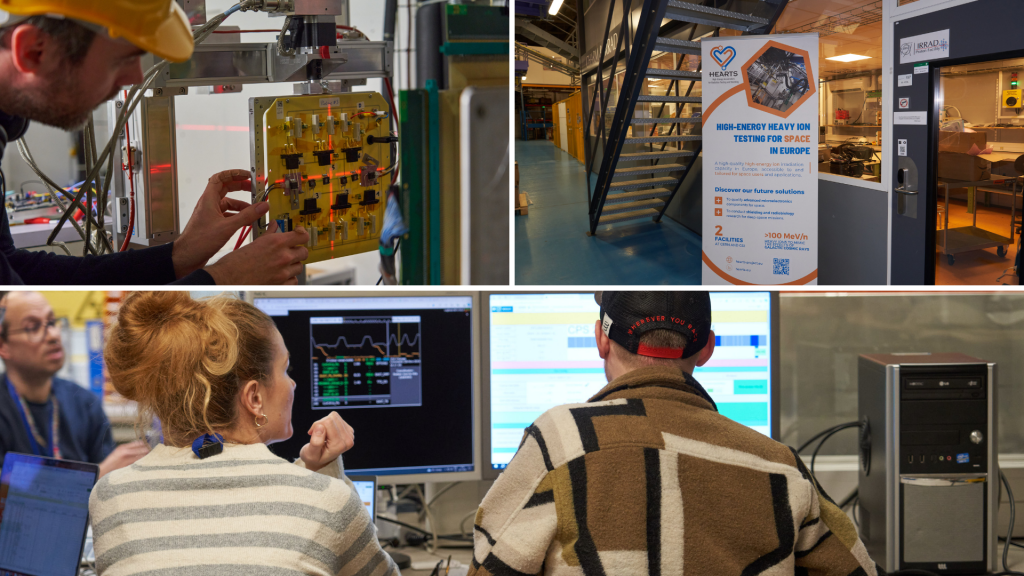Boosting Europe’s Space Radiation Testing Capabilities
The global space economy is today worth over $500 billion as state and private actors unlock more potential every year, with applications ranging from satellite communication, navigation, weather forecasting, environmental monitoring, as well as space-based research and exploration.
But in order to send equipment – including electronics – to space, it all must be tested.
In November 2024, 10 companies and institutions spent over 150 hours at CERN testing electronic components and modules for a variety of uses in space, blasting them with very high-energy lead beams from the Proton Synchrotron (PS) at the recently developed HEARTS@CERN facility.
These experiments represented a pilot run for the EU-funded High-Energy Accelerators for Radiation Testing and Shielding (HEARTS) project, which aims to establish two new radiation testing facilities for space applications, one at CERN and the other at the GSI Helmholtz Centre for Heavy Ion Research in Germany.

The goal of the November pilot user run was to demonstrate the readiness of CERN’s facilities for routine space electronics testing by private companies. It involved six user teams from private companies external to the HEARTS consortium coming to CERN to test their components, an important way of finding out the extent to which they meet the requirements of industrial users.
While other facilities in Europe offer radiation tests, CERN and GSI are the only places capable of producing heavy ion beams at very high energies, meaning that electronic components or devices can be penetrated with radiation at far greater depths and with far heavier an ion – in CERN’s case lead. Having this penetration depth is vital for testing certain electronic components used for space applications. Currently, many European companies are reliant on the NASA Space Radiation Laboratory (NSRL), based at Brookhaven National Laboratory in the US, to test in these conditions.
The feedback from the November test run was positive.
“The HEARTS set-up provides unique testing capabilities, allowing users to expose components to very-high-energy heavy ions,” said Renaud Mangeret, a radiation effects expert at Airbus, one of the users.
Mynaric, a manufacturer of laser communication equipment for airborne and spaceborne communication networks, was also positive about the facilities at CERN.
“It’s hugely important to have testing facilities like this here in Europe,” the team said, which assessed various electronic modules for their optical communications terminals for satellites in low Earth orbit.
“If Europe and the European Union wants to maintain its position as a leading…supporter of proliferated spaceborne communication networks… then more testing capabilities really are needed.”
The HEARTS project builds on earlier work carried out through CERN’s collaboration with the European Space Agency (ESA) via the CHIMERA project to establish a facility at CERN for the testing of highly integrated electronic components.